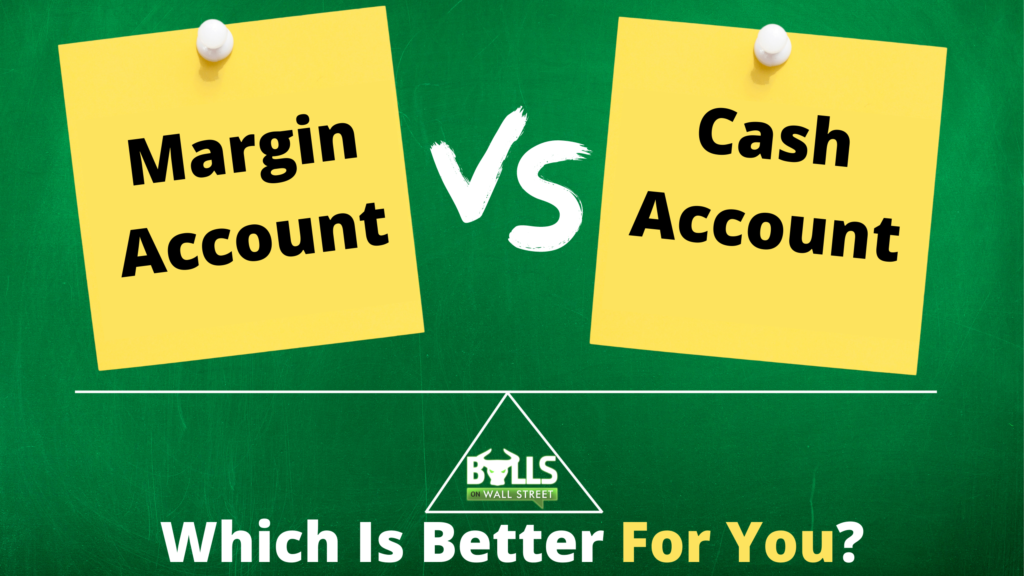Before even starting their trading journey, a lot of new traders bring this question up to us this question:
“Should I open a cash account or a margin account at my brokerage?”
The difference between these two accounts is pretty straightforward, but everyone should know them. This is especially important if you’re trading with a small trading account under the PDT (Pattern-Day-Trading) rule:
Cash Account
A cash account is simple. In this type of account, all transactions must be made only with available cash. If you have $10,000 in the account for example, you only have $10,000 worth of buying power. If you buy 100 shares of a $10 stock, that will use up $1000 worth of your buying power, which would leave you with $9,000 left to trade with.
When buying securities in a cash account, you have to either deposit cash to place a trade, or sell an existing position to free up cash. Something that is very important to know about cash accounts is that you can ONLY long positions. You cannot short. There is also a settlement period when you sell a position at certain brokerages you have to be aware of, meaning that some of your funds or buying power might be tied up for a few days.
The PDT Rule
Cash accounts as well are not susceptible to the dreaded PDT rule unlike margin accounts, but you have to be aware still of the settlement period explained above that can limit the number of trades you can make in a short period of time due to having limited buying power.
The PDT rule for those of you who need a refresher as well is a rule placed on traders in margin accounts that limits the number of day trades they can make in a 5 day rolling period. Traders cannot make more than 4 day trades in one account in a 5 day rolling period. If you want to learn more about this, check out this guide about it here.
As a day trader, we recommend avoiding cash accounts. Trading options or swing trading in a cash account can be a good option if you are not worried about running out of buying power to trade with, or are not placing trades every day.

Margin Account
A margin account allows an investor to borrow against the value of the assets in the account in order to enter new positions. Traders can utilize margin to leverage their positions and trade stocks to the upside or downside. With a cash account, your buying power is determined by the amount of cash you have in your account. If you have $10,000 in your account, you only have $10,000 worth of buying power. With a margin account, brokerages will give you leverage on your cash, usually anywhere from 2-3x your balance, which would allow you to trade with double or triple the amount of money in your account. In this example, you would have anywhere from $20,000 to $30,000 worth of buying power at your disposal.
For traders seeking to leverage their positions, a margin account can be very useful and cost-effective. Margin accounts also allow you to short stocks, unlike cash accounts. For day traders who are placing trades frequently and need buying power on demand, margin accounts are best.
With margin and leverage though, comes some downsides. In a margin account, you are susceptible to the PDT rule, and the riskiness of your trading operations is higher. With leverage, you have more buying power than the cash in your account, so losses can be much more extreme and dangerous to your overall balance. In theory, you can actually lose more than you have in your account if you are irresponsible.
Live Trading Classes From Experienced Traders: Join Our Live Trading Boot Camp
Space fills up fast in our boot camps. Apply for your seat to see if you qualify!




